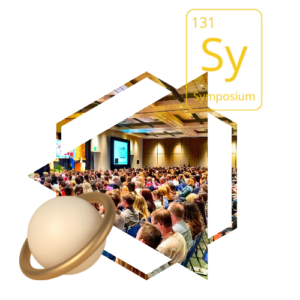
SYMPOSIUM
SCHEDULE & TOPICS
* The details of the schedule will be available after registration or by a request.
Science & Technology
8:00 – 9:00 am
Registration
9:00 – 10:00 am
Individual Key Speakers*
“Human Brain Safety in Extreme and Dangerous Environments”
10:00 – 11:00 am
Medical XR & VR for Medical Treatments
Panel Discussion
A Berkshire Hathaway Company report predicts the global augmented and virtual reality market in healthcare will reach $10.82 billion by 2025. The use of XR technologies has an application beyond medical training or university classrooms. In neurology, the XR technology can be used in cases such as stroke, Parkinson’s disease, spinal cord injury, associated neuropathic pain, multiple sclerosis, paralysis, etc. However, several challenges underlying their practical applications, one of them being the evaluation challenges of these medical devices’ safety and effectiveness. Also, the equipment cost and comfort of wearing hinder their broader application. At this panel discussion, we will discuss the spectrum of medical XR & VR usage and solutions for overcoming the challenges.
Speakers*
11:00 – 12:00
Brain-Computer Interfaces (bci) and Haptic Technology
Panel Discussion
Brain-Computer Interfaces (BCI) help people with disabilities and neurological disorders to get back control of their limbs and overcome speaking challenges. They can assist in hazardous environments and facilitate brain research. Haptic Technology allows users to create virtual objects and interact with products. The main challenges of BCI are: learning to use BCI can require substantial training, an ethical framework about potential unfair advantage by certain human enhancement, security & privacy, and exposure to cyberattacks. During this discussion, we will discuss a spectrum of applications and solutions for overcoming the challenges.
Speakers*
12:00 – 13:00
Individual Key Speakers*
“Collaboration and Partnerships in the Human Brain World”
13:00 – 14:00
LUNCH BREAK
14:00 – 15:00
How far can we go in the advancement of Human Brain Genotype? Neurological and psychiatric genetics
Panel Discussion
Neurological disabilities can be predicted by certain genetic testing that can be performed by the use of gene panels and exome sequencing. According to the latest publications: epigenetic studies in the human brain are mostly limited to the exploration of DNA methylation and posttranslational modifications of the nucleosome core histones. In contrast, very little is known about the regulation of supranucleosomal structures. The study of higher-order chromatin is informing about genome organization in the human brain. But how far did we go in terms of human brain gene modifications and control? How ethical is that? And how can this research benefit or hurt the human population?
Speakers*
15:00 – 16:00
Human Brain Imaging and Visualization
Panel Discussion
For the identification of neurological disorders in their earliest stages and the propagation of the human brain research imaging and brain, visualization is a vital component. There are certain challenges associated with this field of studies, due to the brain’s dense and highly myelinated nature, especially in white matter. However, humanity already can create three-dimensional (3D) concordance maps of the cyto- and fiber architecture of the human brain. What is the stage of development? How deep can we see the brain and can it possibly influence our future?
Speakers*
16:00 – 17:00
Artificial Human Brain, How far we are from its creation
Panel Discussion
The emulation of synaptic plasticity can be performed by the usage of different types of materials, including a cobalt-based synaptic transistors, memristor based on MoS2, two-dimensional materials composed of MoS2 and AlN, a biopolymer-gated ionotronic junctionless oxide transistor arrays. How far has humanity in the matter of the materials developed for the emulation of the human brain and can we get the entire human brain emulated in the near future? How can this benefit and / or harm our development?
Speakers*
Science of Human Senses & Emotional Wellness
8:00 – 9:00 am
Registration
9:00 – 10:00 am
Individual Key Speakers*
“HR and Corporate Governance”
10:00 – 11:00 am
Video Production, Sound & Visual Effects
Panel Discussion
How do Sound and Visual effects shift our reality and impact our wellness? The psychiatric and physiological aspects of the visual and sound effects’ impact on the human body will be discussed from the perspectives of business, art, and science environments. The aspects of safety & privacy & personality will also be discussed. And how those effects can change the way HUMAN perceive and store information. What Makes the Human Kind Happy the Most and how do video consumption patterns impact the way we search for information and make purchase decisions? What steps humankind is ready to make to get what they are looking for and how this impacts our happiness and satisfaction level?
Speakers*
11:00 – 12:00 am
Positive Psychology, Resilient, Motivational Balance
Panel Discussion
How does the way we think and communicate impact our brains? How Positive Psychology and Resilient can change the happiness level of humanity.
Speakers*
12:00 – 13:00
Individual Key Speakers*
“Mental Wellness Professional Support Accessibility”
13:00 – 14:00
LUNCH BREAK
14:00 – 15:00
Skin to Brain Connection – Neurosises
Panel Discussion
The skin has multiple functions in Human Body. Skin health significantly impacts our immune system and the natural brain’s defense mechanisms. How to keep our skin healthy? How to be sure that we are getting and sending the right signals to our brains via our skins?
Speakers*
15:00 – 16:00
16:00 – 17:00
Nutrition and Medication for Brain
Panel Discussion
How can food and supplements impact Human Brain? Can we avoid medications and heal ourselves with nutrition and natural bio-additives? What are the most current innovations in the field?
Speakers*
17:00 – 18:00
Pain Management
Panel Discussion
Broadly available pain relievers hurt your stomach and your longevity. Can we exclude the usage of pain relievers? How efficiently the current digital and technical solutions can help us with pain relief?
Speakers*